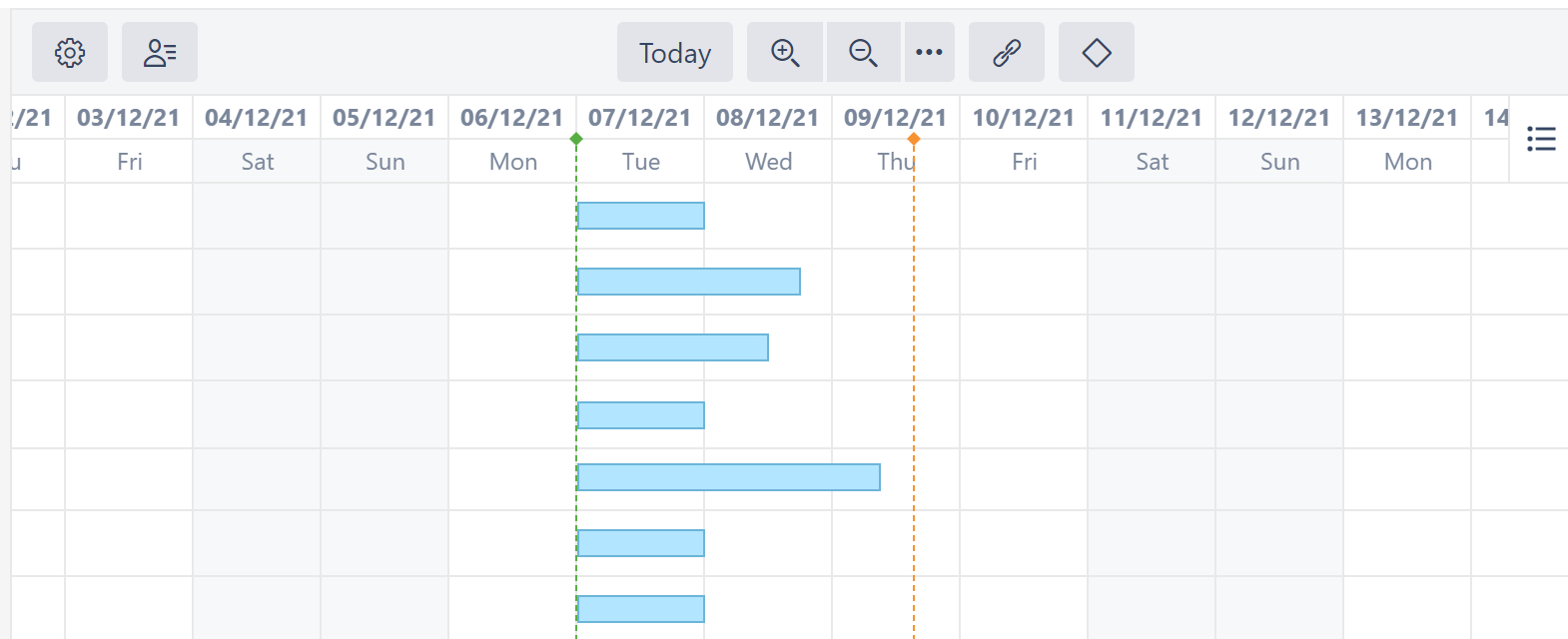By default, Gantt will auto-schedule tasks based on your project start date, task estimates, predecessors, and dependency types. If you are working from a brand new structure and haven't yet set up dependencies or Start and Finish dates, chances are your Gantt Chart looks something like this:

As you create dependencies between items, your chart will automatically update so that successor tasks do not start until their predecessor is complete (or until the predecessor is estimated to be complete).

As work estimates and dependencies change, tasks will automatically be moved along the timeline to accommodate those changes. Additionally, if you move an individual task on the timeline, any dependent tasks will also be shifted.
The example above illustrates Finish-to-Start dependencies. You can also configure Start-to-Start, Finish-to-Finish, and Finish-to-Start dependencies, and Gantt will schedule them accordingly.
For more information, see Dependencies.
Enabling Automatic Scheduling
When you first create a Gantt chart, automatic scheduling is enabled by default. If manual scheduling has been enabled since then, you can switch back to automatic scheduling in one of the following ways:
-
Automatically schedule all tasks - open Settings | Scheduling, scroll to Manual Scheduling, and uncheck Allow manual scheduling.
-
Automatically schedule a single task - click on the task to open its Task Details panel and switch the Mode to Auto.
-
Automatically schedule select tasks - create a slice for the tasks, add a Manual Scheduling setting, and uncheck Allow manual scheduling.
